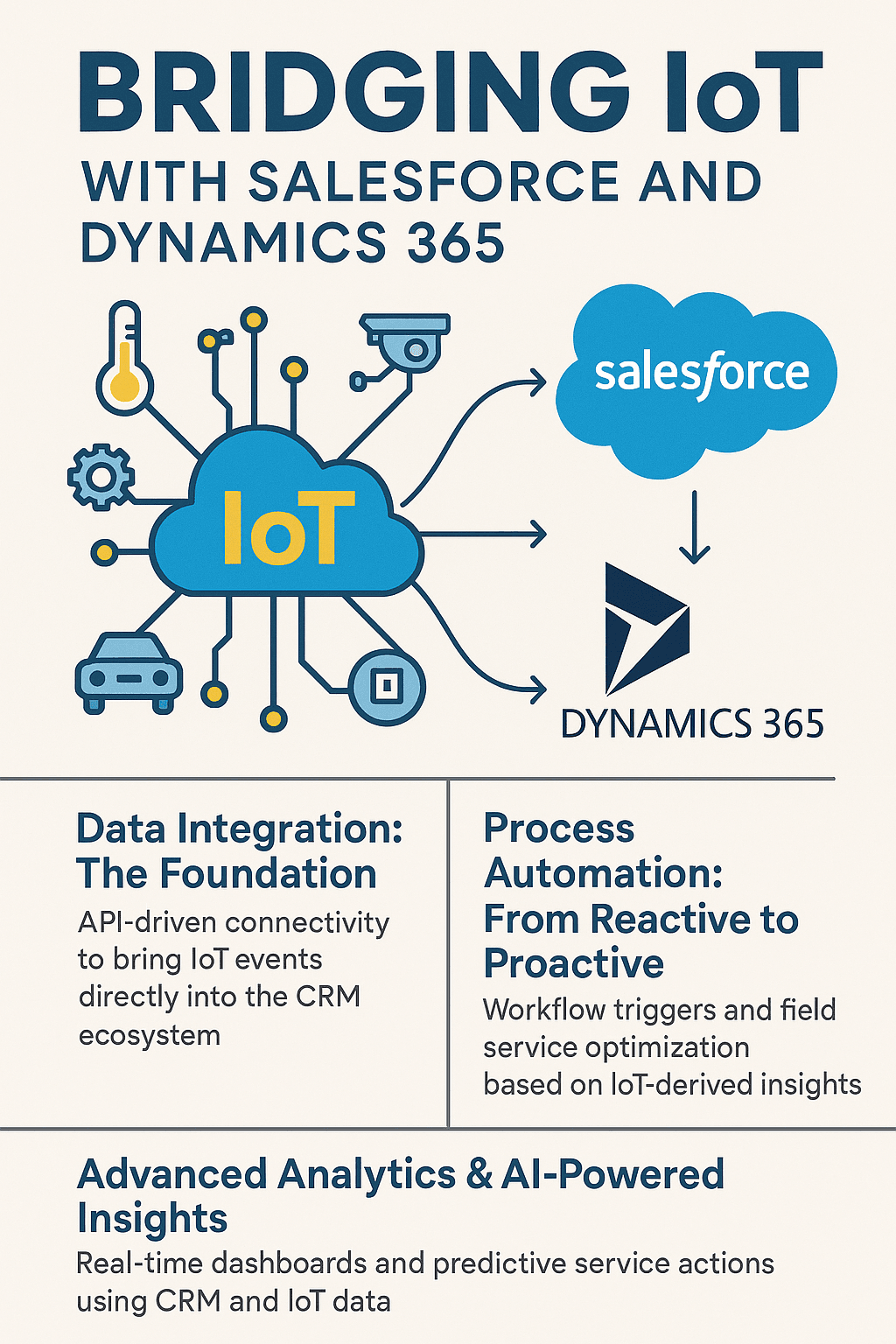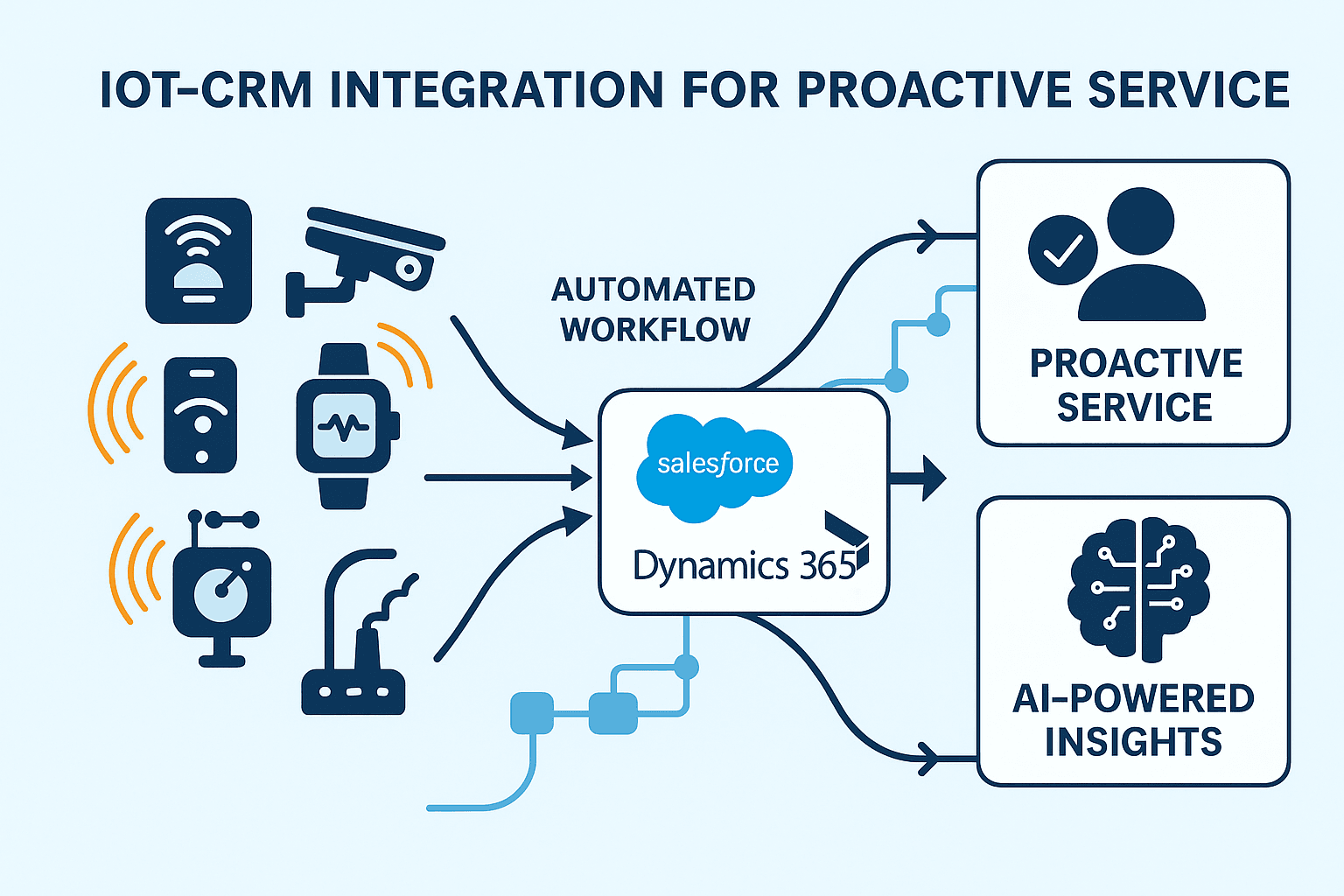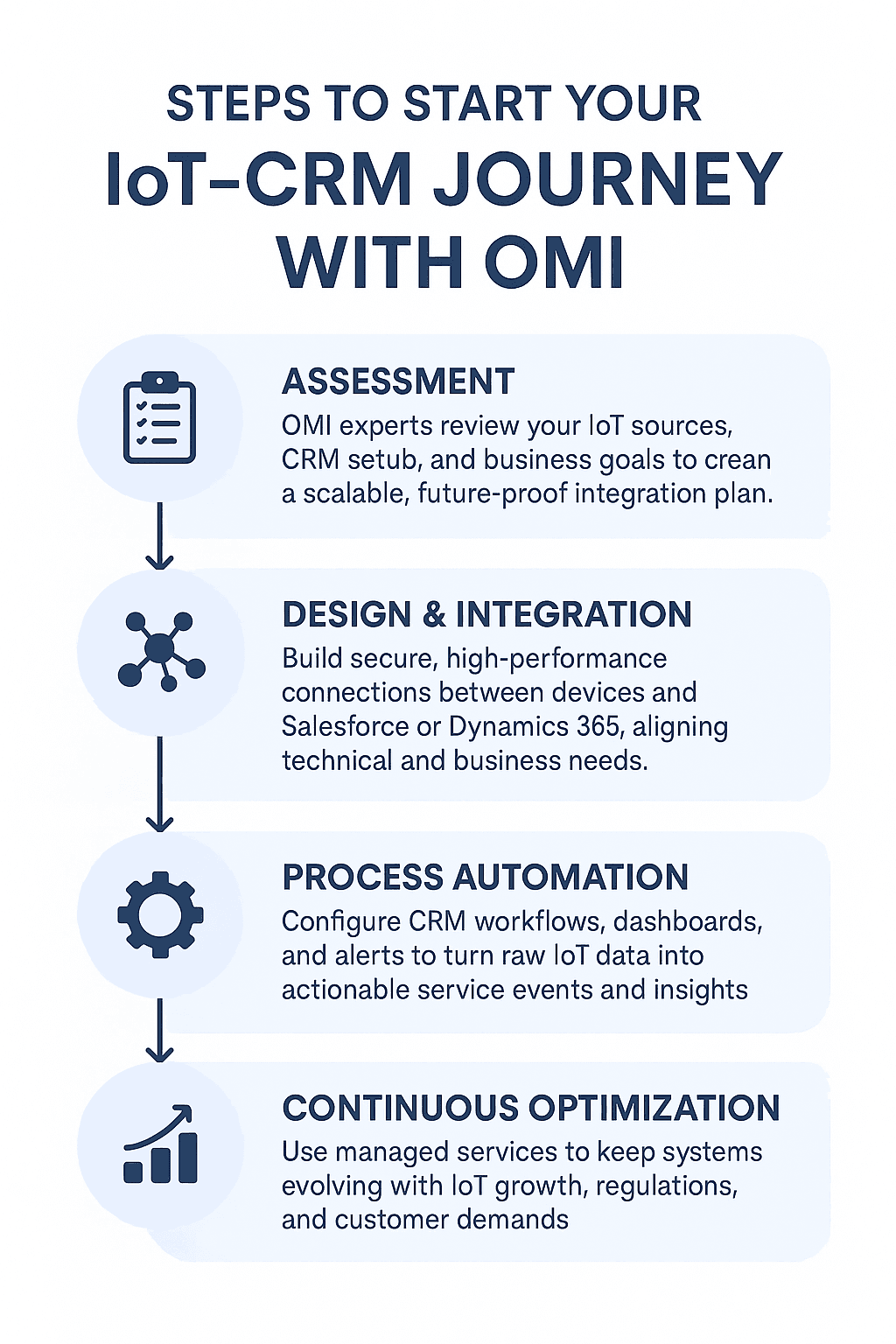Bridging IoT and CRM: Leveraging IoT Data in Salesforce and Dynamics 365 for Proactive Service
Blog

The exponential growth of the Internet of Things (IoT) has significantly transformed how businesses collect, analyze, and act upon data. For organizations invested in sophisticated customer relationship management (CRM) platforms like Salesforce and Microsoft Dynamics 365, integrating real-time IoT data is now a key driver for delivering proactive and even predictive customer service. At OMI, with our decades-long expertise in Salesforce and Dynamics integration and customization, we’ve witnessed first-hand how organizations bridge the gap between operational technology and customer-centric platforms to unlock exceptional value.
Understanding the Challenge: IoT Data and CRM Disconnection
Modern businesses are deploying fleets of sensors, connected products, and smart devices whether it's temperature controls in supply chains, energy usage monitors in buildings, or usage trackers in field-deployed machinery. While IoT generates a flood of valuable data, one of the most common hurdles is aligning this data with CRM systems in a way that delivers actionable insights to service and support teams. The result? Too often, organizations are left with siloed datasets, missed service opportunities, and a reactive (rather than proactive) approach to customer issues.

The Solution: Bridging IoT with Salesforce and Dynamics 365
True digital transformation happens when IoT data flows seamlessly into your CRM enriching customer profiles, triggering automated workflows, and empowering support teams to anticipate and resolve problems before customers even notice them. Here’s how OMI approaches this challenge for our clients:
1. Data Integration: The Foundation
- API-Driven Connectivity: Both Salesforce and Dynamics 365 are built to integrate via APIs. By leveraging platform-native tools as well as middleware solutions (like Flowgear, a key OMI partner), we facilitate secure, scalable dataflows that bring IoT events directly into your CRM ecosystem.
- Data Mapping & Normalization: It’s not just about transmitting data, but translating diverse IoT signals into customer-relevant context linking devices to accounts, locations, and service cases.
2. Process Automation: From Reactive to Proactive
- Workflow Triggers: Configure Service Cloud (Salesforce) or Customer Service modules (Dynamics 365) to automatically create cases, escalate issues, or dispatch notifications based on incoming IoT data such as threshold breaches, predictive maintenance alerts, or unusual activity.
- Field Service Optimization: Schedule technicians, inform customers, and track resolution progress by syncing IoT-derived insights with field service platforms.
3. Advanced Analytics & AI-Powered Insights
- Real-Time Dashboards: Surface the most critical device data and KPIs for support teams using CRM-native dashboards, ensuring complete situational awareness without jumping between platforms.
- AI-Driven Recommendations: Enable predictive service actions such as suggesting parts replacements or recommending preventative check-ins by combining IoT trends with CRM data and machine learning models. At OMI, we help businesses infuse these capabilities to empower smarter decision-making.
Industry leaders agree that IoT-CRM integration has become a crucial driver for improving customer satisfaction and delivering proactive service. As Arun Gupta notes in DestinationCRM, combining IoT data streams with CRM platforms like Salesforce and Dynamics 365 enables immersive personalization and operational efficiency.
Best Practices for Implementing IoT-CRM Integration
- Begin with Clear Use Cases Focus initial integration efforts on high-impact scenarios. For example, connecting field-deployed assets to CRM for preventative maintenance or leveraging sensor data for warranty and service contract management.
- Ensure Robust Data Governance Establish protocols for data quality, privacy, and consent especially when handling sensitive or regulated IoT data within customer profiles.
- Leverage Managed Services for Scale With experienced partners like OMI, organizations can reduce the internal burden of maintaining IoT-CRM workflows, focus on innovation, and ensure continuous optimization as new capabilities emerge.
- Invest in User Training and Change Management Ensure that service, sales, and support teams understand how to leverage IoT insights in their day-to-day workflows for maximum customer value.

Practical Examples: What Does Proactive Service Look Like?
Let’s consider some transformative applications of IoT CRM integration based on the real-world outcomes we’ve enabled for OMI clients across industries:
- Manufacturing: Field sensors report equipment anomalies directly to Salesforce Service Cloud, auto-logging cases, and dispatching technicians dramatically reducing downtime and improving SLA compliance.
- Smart Buildings: Environmental sensors feeding occupancy and usage data into Dynamics 365 Facilities Management, helping identify preventative maintenance opportunities before failures impact tenants.
- Product-as-a-Service Models: Subscription-based offerings use IoT data to monitor usage patterns, automate renewals, and deliver personalized upsell recommendations through CRM-driven marketing automation.
Steps to Start Your IoT-CRM Journey with OMI
- Assessment: OMI’s experts evaluate your IoT sources, current CRM architecture, and business goals to chart a scalable, future-proof integration plan.
- Design & Integration: We architect secure, performant connectivity between devices and Salesforce or Dynamics 365 bridging technical and business requirements
- Process Automation: Our consultants configure CRM workflows, dashboards, and alerts that turn raw sensor signals into actionable service events and insights
- Continuous Optimization: With managed services, OMI ensures systems evolve in step with IoT expansion, regulatory needs, and new customer demands.
A step-by-step guide from BenefitsOfCRM echoes this approach, stressing the importance of mapping IoT data sources, securing data governance, and ensuring continuous optimization to achieve predictive, personalized customer experiences.

Why OMI?
Our two decades working in CRM and business intelligence combined with recognized partnerships in both Salesforce and Microsoft ecosystems equip us to bridge even the most complex gaps between operational data and customer excellence. Whether it’s end-to-end Salesforce implementation or Dynamics 365 integration services, OMI provides both the technical muscle and industry acumen to drive results from IoT investments.
Ready to explore how IoT-CRM integration can unlock proactive service for your business? Connect with the OMI team for tailored guidance and real-world solutions.